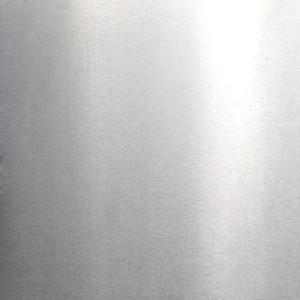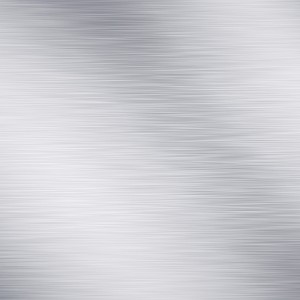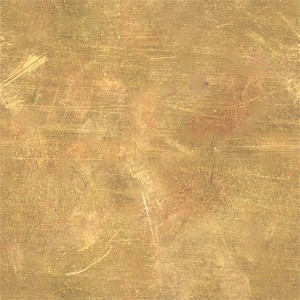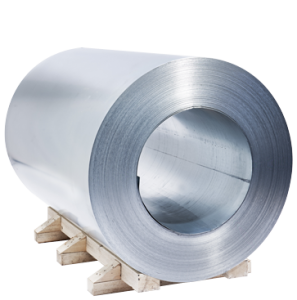MATERIALS
Our 26 profiling lines allow us to process the raw material with thicknesses starting from 0.4 mm up to 6mm in various ferrous and non-ferrous materials, for example: black and pickled, galvanized, pre-painted, plasticized, stainless steel ( 430 – 304 – 316), aluminum, copper, brass, corten, magnelis or at the customer’s specific choice.
PICKLED STEEL
Pickled steel is a steel that has undergone a chemical treatment: pickling. This operation involves the elimination of the surface layer of the steel, which can usually show the presence of oxides, rust residues formed by hot rolling, surfactants, corrosion inhibitors and a whole series of chemical substances, through immersion in a bath in solutions of acid or alkali. Pickling is usually carried out to make the surface of the steel porous, therefore suitable for bonding with other metals, in the case of steel bars and pipes to improve their characteristics, or for the application of a protective anticorrosive coating. The acid baths, with which this treatment is carried out, are rather aggressive, being hydrochloric acid or sulfuric acid, but also phosphoric acid, nitric acid and hydrofluoric acid, at high temperatures. Therefore, to prevent the steel, now deprived of the superficial oxidation layer, from being attacked by the acids themselves, corrosion inhibitors are added to the inside of the solutions.
Pickling allows the steel to receive numerous treatments, which depend on the required finishes, including passivation, chrome plating, anodic oxidation and painting. Once the desired finish has been chosen, the steel will be processed to create the desired type of profile. Damilano Group, thanks to the internal technological equipment, is able to create complex metal profiles, profiles made to measure and based on the designer’s design and special profiles.
SENDZIMIR GALVANIZED OR ELECTROGALVANIZED STEEL
The Sendzimir treatment is a hot dip galvanizing process, which takes its name from an engineer of Polish origin who in the 1940s developed a rolling mill for the continuous manufacture of rolled steel in coils and large sheets. Sendzimir galvanized steel is a steel that undergoes a particular hot dip galvanizing treatment. Before treatment, the sheet is degreased to eliminate surface impurities, then it is subjected to pickling in hydrochloric acid to eliminate iron oxides. Then the sheet passes through a bath of molten zinc at 700 ° contained in a ceramic tank. Lead is added to this bath to fluidize and aluminum to increase the adhesion of the zinc to the steel. The thickness of the steel strip is variable and can be controlled through an adjustment system, so that it is of the desired size.
Once the treatment is finished, the sheet metal strip is rewound, ready for profiling. The steel will then be processed to create the desired type of profile, in fact, thanks to the internal technological equipment, Damilano Group is able to create complex metal profiles, customized profiles and to the design of the designer and special profiles.
PREPAINTED STEEL
Pre-painted steel is a material composed of a base layer of steel, coated with a layer of zinc which is then painted using a continuous method (coil coating) or colamination with sheets of plastic materials. It is then finished superficially. In this way, the characteristics of galvanized steel are maintained and enhanced. The steel substrate guarantees a series of mechanical properties, resistance to corrosion increases, as the paint creates an additional barrier to external agents, the colors, brilliance and surface finishes are manifold to satisfy every aesthetic requirement. The choice of the external coating depends on the use of steel and it is possible to combine it in different ways: it can be present in the same way on both faces of the substrate or it can be applied only one face, generally the upper one, while the other has been pretreated or coated. In addition, even the morphology of the profile can satisfy any need, Damilano Group in fact offers a wide range of complex metal profiles, special profiles and custom profiles, which are shaped according to the customer’s needs.
STAINLESS STEEL
Stainless steel or stainless steel is a ferrous alloy containing chromium and carbon and other metals, which combined increase the intrinsic characteristics of steel. Furthermore, the presence of carbon, coming into contact with oxygen, allows the development of an invisible surface oxidation layer, able to protect the steel from external corrosion. The presence of nickel, on the other hand, makes the steel more resistant to formability and weldability. The enriched material is therefore more performing from a structural point of view and responds better to the cold profiling process. The choice of stainless steel in the production of complex, special or customer-designed profiles has numerous advantages. This type of steel, in fact, has high mechanical characteristics combined with ductility and resistance to high temperatures, which makes it possible to use lower thicknesses in profiling operations, the metal profiles are therefore lighter with consequent cost containment. Furthermore, this type of steel is durable over time, requires minimal maintenance, and is 100% recyclable, having an infinite life cycle, it allows to combine environmental sustainability and economic convenience.
ALUMINUM
Aluminum is a ductile and malleable metal, resistant to oxidation. This characteristic is due to the formation on its surface of an oxidation layer that does not allow oxygen to attack the underlying metal, making it insoluble. It is a very light metal, with a specific weight of one third lower than that of steel and copper, and it is a very workable plastic material while not losing its durability characteristics, it is not magnetic and does not produce sparks, an optimal feature during the processing cycles. It also has high thermal and electrical conductivity and low radiant power. In addition to these chemical-physical properties, aluminum is well known for its total recyclability with low energy costs and, above all, the material returns to its original state, without losing any of its characteristics. The virtuous cycle of aluminum provides, in fact, the practically infinite regeneration of the material, which conserves 95% of the energy absorbed in the primary production phases. The economic convenience of recycling this material is therefore clear, as well as the undoubted advantages in terms of environmental sustainability. Aluminum profiles are, for all this series of reasons, widely used, making profiling and extrusion very convenient for the company. Damilano Group, especially in the range of doors and windows, has chosen this material for the production of complex metal profiles, special profiles and customized profiles, combining high performance and attention to environmental sustainability.
COPPER
In terms of characteristics, copper looks a lot like aluminum, it is in fact easily workable, malleable and ductile, it is not magnetic and has very high thermal and electrical conductivity. It resists corrosion very well, thanks to the well-known green-blue oxidation patina that develops on the surface. Even copper, like aluminum, is easily recyclable and has a high recovery value, it is in fact also a virtuous material, that is, it can be recycled countless times without losing its mechanical characteristics. It is often combined with other metals to form alloys, such as bronze and brass. Damilano Group uses this material, through the processing of cold profiling, for the production of complex metal profiles, special profiles and profiles according to the customer’s design.
BRASS
Brass is an alloy of copper and zinc. The combination of these two materials makes it an easily workable material but as it is tough, to avoid wearing out the profiling machinery and to reduce energy consumption, it is often additive with other elements, such as lead, tin, aluminum, nickel . Brass has a very wide range of applications, Damilano Group uses it to create complex metal profiles, special profiles and custom profiles to meet any customer need, through cold profiling.
CORTEN STEEL
COR-TEN steel (CORrosion resistance – TENsile strenght) also known as patinated steel, is a particular type of steel “with a low content of alloying elements and high mechanical resistance”. This material, patented in 1933 in the United States by the United States Steel Corporation, is well established in the USA and is rapidly spreading also in Europe, in various fields. The main feature of this steel is the formation of a passivating surface film through the oxidation of its alloying elements, which protects the underlying material from the spread of corrosion.
These shades of “rust” combined with resistance to atmospheric agents, have meant that COR-TEN steel spread a lot in the field of sculpture and decorative level for buildings. The first examples of applications in architecture date back to the mid-1960s, with the Finnish architect Eero Saarinen. In the metal carpentry sector, on the other hand, COR-TEN steel has significant technical and economic advantages. If used instead of the more common structural steels, it allows to reduce the thickness and therefore the weight of the semi-finished product. So in addition to saving material, thanks to the protective patina, this steel has reduced maintenance problems. Currently there are three types of COR-TEN steel, depending on the different chemical composition and thickness, which have different degrees of mechanical resistance and atmospheric corrosion. COR-TEN type A, also called phosphorus, is the most common in the architecture sector both for an aesthetic factor and because it lends itself to being painted, it is produced in thicknesses up to 12.5 mm. It also has a resistance to atmospheric factors of 5/8 times higher than that of a common carbon steel. COR-TEN type B, also known as vanadium, and COR-TEN type C are used on the structural level for highly stressed structures.
COR-TEN steel is commonly supplied in the raw state in the form of sheets. It can be processed in various ways, including cold profiling which can be performed on thicknesses up to 12.5mm. COR-TEN profiles can be supplied raw or pre-oxidised, through a chemical acceleration process that causes the formation of a protective film, useful for avoiding damage to the metal itself. Both for aesthetic qualities and for corrosion resistance, COR-TEN steel is one of the materials used by Damilano Group for the production of complex metal profiles, special profiles and customized profiles.
MAGNELIS
Magnelis is an innovative and very corrosion resistant metal coating, made starting from a common hot dip galvanizing process, which makes the steel very performing even in aggressive environments. The steel is immersed in a zinc bath with additives of 3.5% aluminum and 3% magnesium. it is this percentage of magnesium that makes the difference compared to other coatings; in fact, thanks to this element, a stable and resistant patina is generated along the entire surface of the metal, capable of withstanding corrosive agents very effectively.
This type of steel is used for example in chloride-rich or highly alkaline environments. Furthermore, its high resistance to corrosion means that the amount of material used, in terms of thickness, is considerably reduced, with a consequent weight reduction. The magnesium with additive, in the galvanizing phase, also gives the steel the ability to self-repair on the edges, ie the formation of a protective layer as well as preventing corrosive reactions, guarantees active and long-term protection.
Furthermore, since the adhesion characteristics between the protective film and the substrate are very high, Magnelis steel can be subjected to forming through various processes including, cold profiling, bending, stamping, without affecting the characteristics of the material. For these innumerable qualities, Magnelis steel was introduced as a material suitable for cold profiling, through which Damilano Group produces complex metal profiles, special profiles and customized profiles.
Inoltre poichè le caratteristiche di adesione tra il film protettivo e il substrato sono elevatissime, l’acciaio Magnelis può essere sottoposto a formatura attraverso varie lavorazioni tra cui, profilatura a freddo, piegatura, stampaggio, senza che vengano inficiate le caratteristiche proprie del materiale. Per queste innumerevoli qualità , l’acciaio Magnelis è stato introdotto come materiale adatto alla profilatura a freddo, tramite cui Damilano Group realizza profili metallici complessi, profili speciali e profili su misura.












